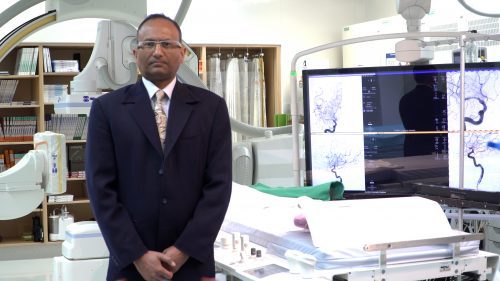Take a look at the people behind the research, product, company or groundbreaking discovery. The ASTech Foundation’s Humans of Alberta Innovation campaign shows a new side to Alberta’s fascinating innovation community — the human one.
Dr. Mayank Goyal won the 2016 Outstanding Leadership in Alberta Technology Award for improving the outcome of stroke patients. His latest innovations, the multiphase computed tomography angiogram (mCTA) and the Brisk Recanalization Ischemic Stroke Kit (BRISK), are vastly improving stroke treatment.
I was always a science and technology kid
 Innovation does not happen overnight. Over the last 10 to 12 years, I have focused my life on producing the research into how the brain vessels work, and then how to optimize diagnoses, workflow, procedures and how to open the vessel fast.
Innovation does not happen overnight. Over the last 10 to 12 years, I have focused my life on producing the research into how the brain vessels work, and then how to optimize diagnoses, workflow, procedures and how to open the vessel fast.
We work to improve patient outcomes. One of the big limitations was the imaging. You do a CT scan to figure out if the patient is having a stroke and to find the blockage. It was taking too long. I was struggling to come up with an idea to make the imaging procedure faster, and make it easier for residents and fellows in training to diagnose things faster. That’s when I came up with the multi-phase CTA. It was implemented in some of the largest trials around the world and has been used in at least 50 centres. The old method would sometimes take upwards of 20 to 40 minutes to diagnose a stroke. At our facility, we can get the imaging done and have a diagnosis in about five minutes. It makes it very easy to make a decision and move on to the next step.
Our team is focused on making stroke care better around the world. Recently I was in Australia and I went to eight different centres to help them optimize their stroke care. Last week I was in India. That ability to influence change around the world through research and innovation is a very satisfying part of my life.
I was always a science and technology kid. To come up with relevant and useful ideas, it took years and years of experience and understanding of the subject, identifying a problem, and coming up with a solution. I tell my students, “if you want to do it the easy stuff and come up with the structure of an atom, you needed to be born 200 years ago. All the easy stuff has been done.” We are left with the not-so-easy stuff.
When I was in medical school, I was most interested in the brain. I felt like it was the last frontier, in which we have the least amount of understanding. I was inspired by my peers, who shared the same passion. We have a super strong group on the stroke team, and I’m proud to be part of it. We all push each other, and all perform at a very high level. Building the right team and surrounding yourself with intelligent people who are passionate about the same things is a really important part of success.
